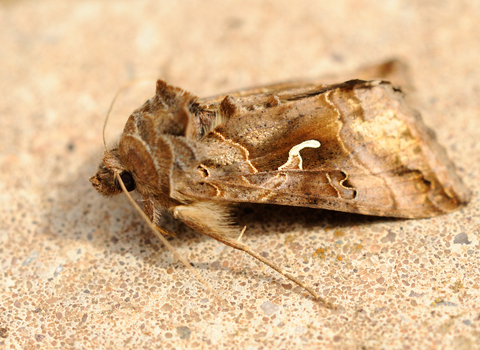
©Amy Lewis
Silver Y
The silver Y migrates to the UK in massive numbers each year - sometimes, an estimated 220 million can reach our shores in spring! Seen throughout the year, it is very common in gardens and grasslands.
Scientific name
Autographa gammaWhen to see
January to DecemberSpecies information
Category
Statistics
Wingspan: 3.5-4.2cmMigrant.
